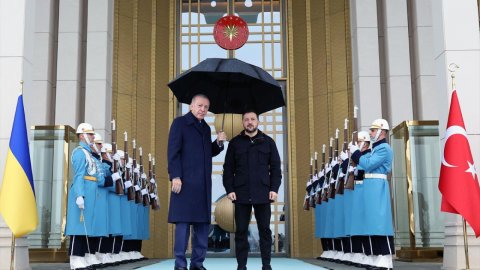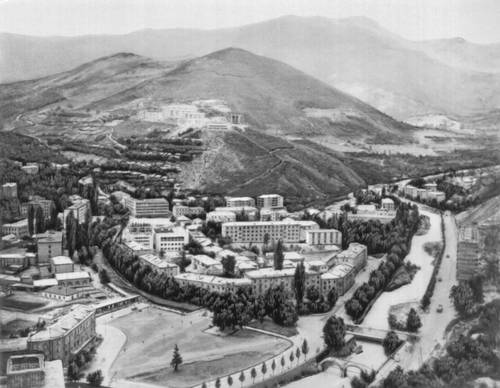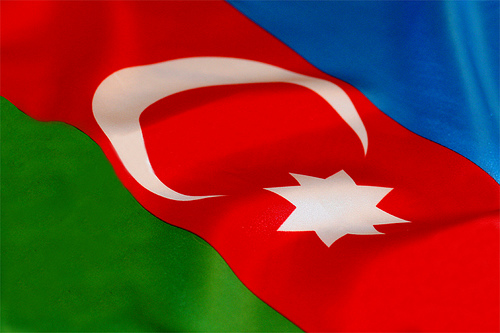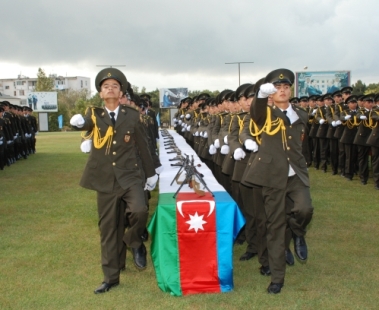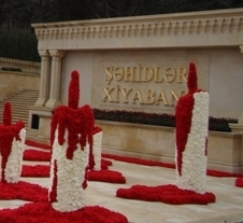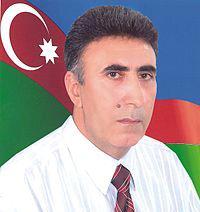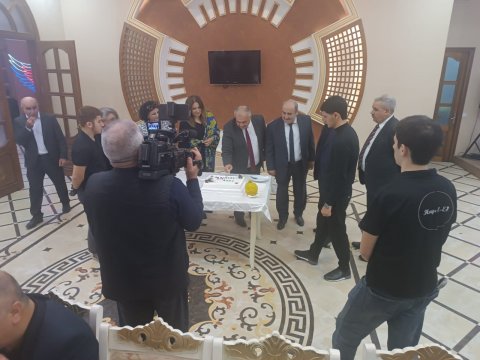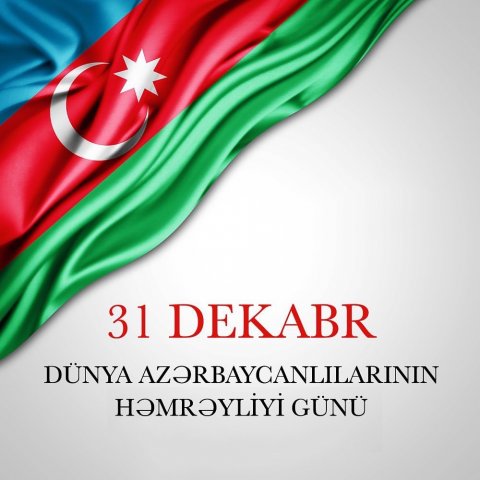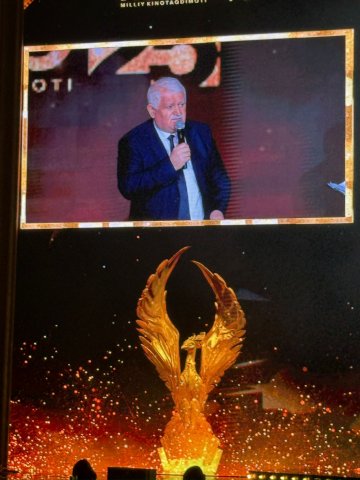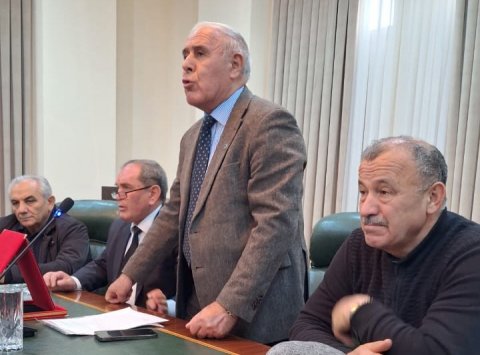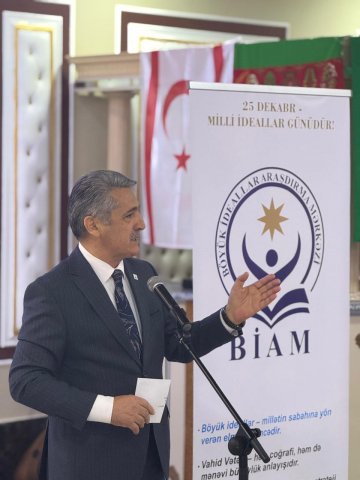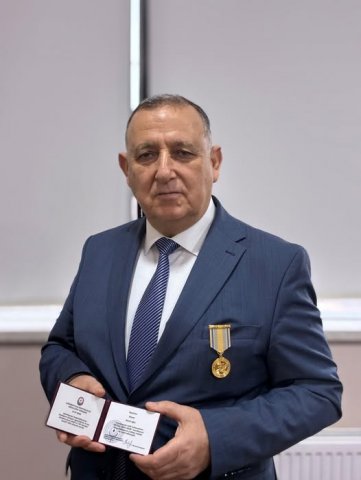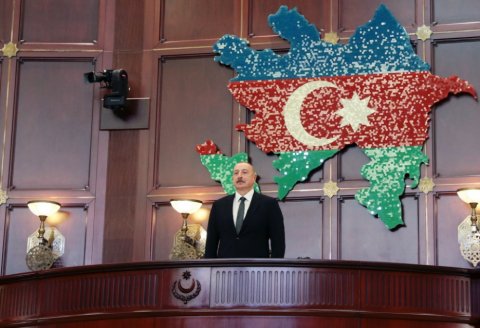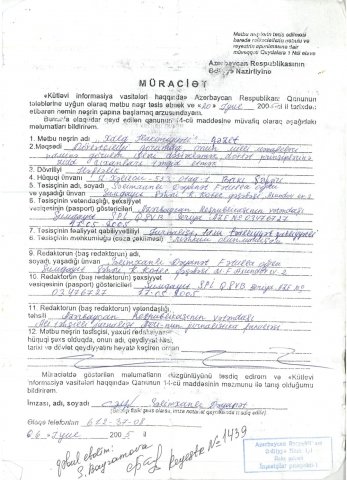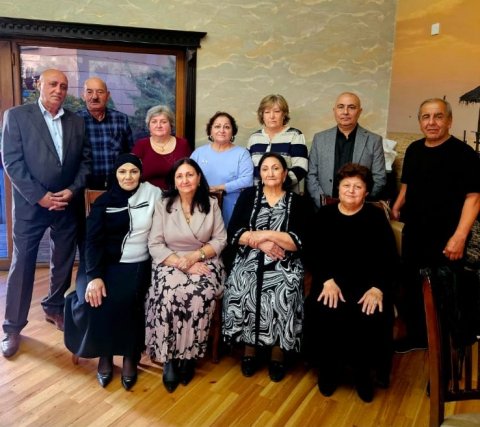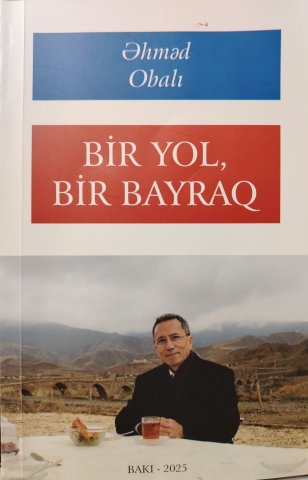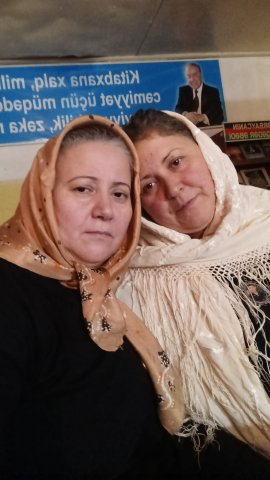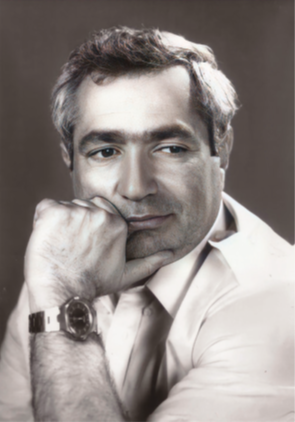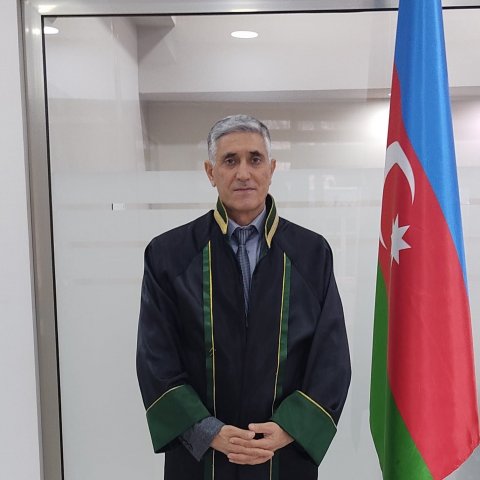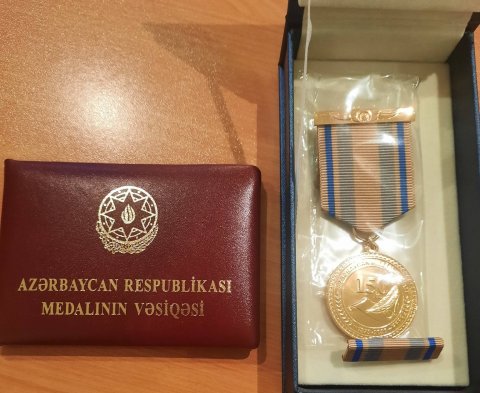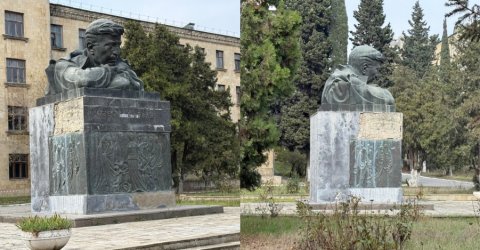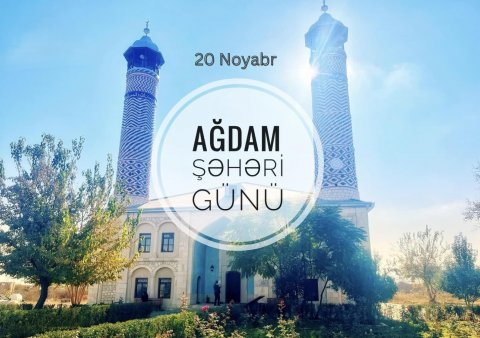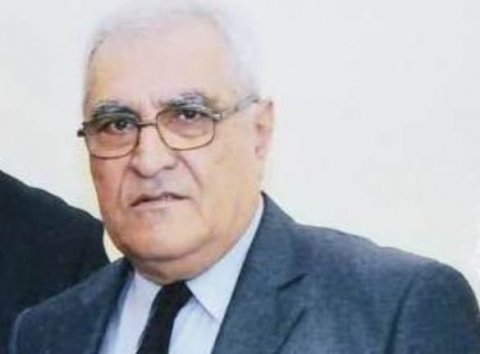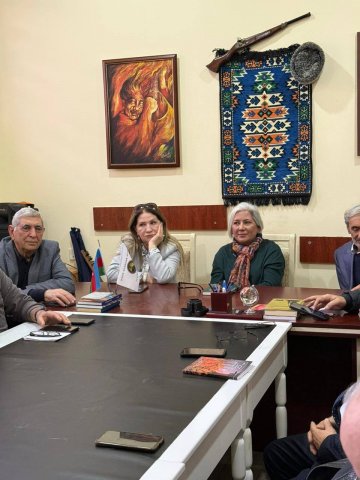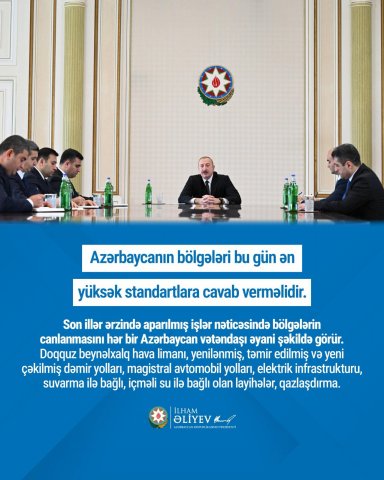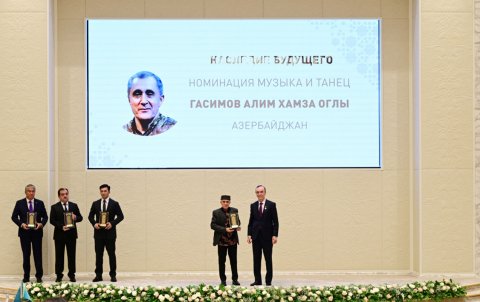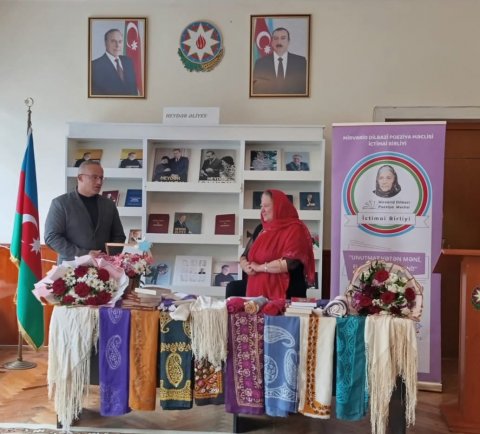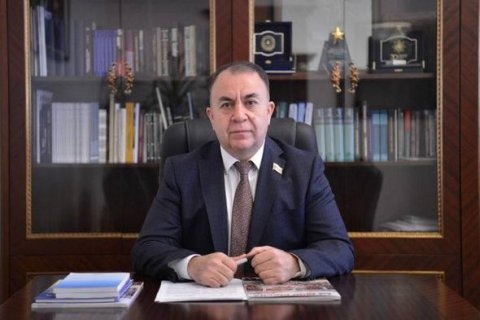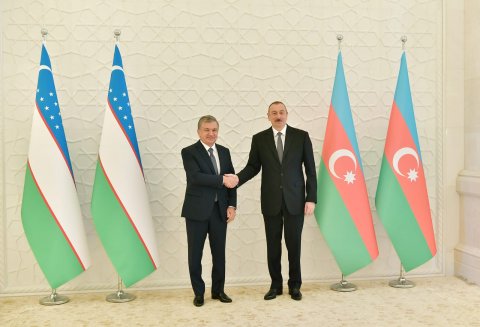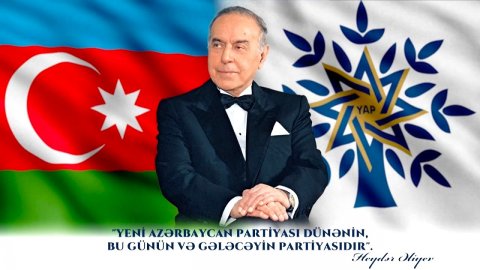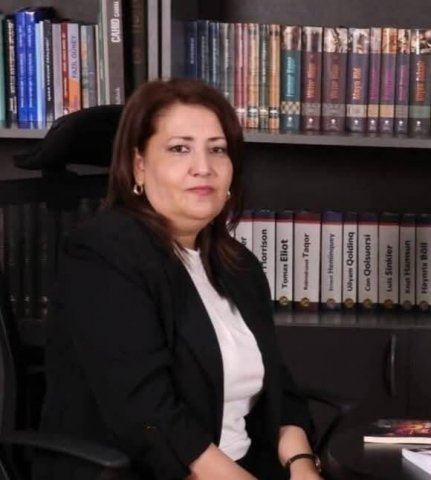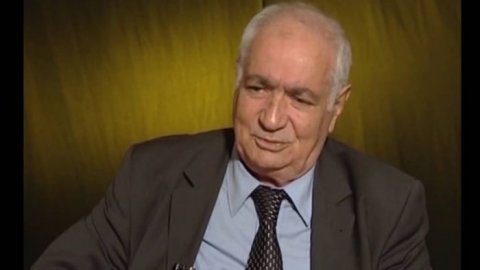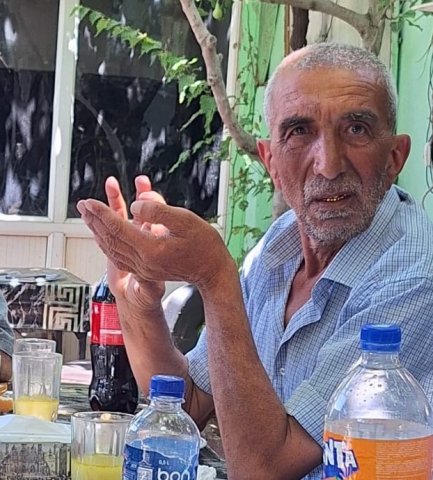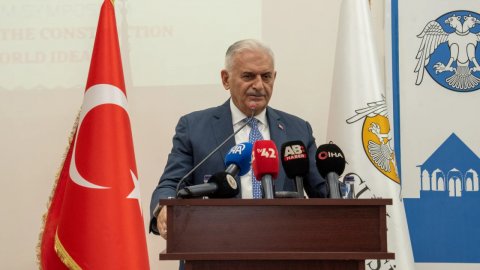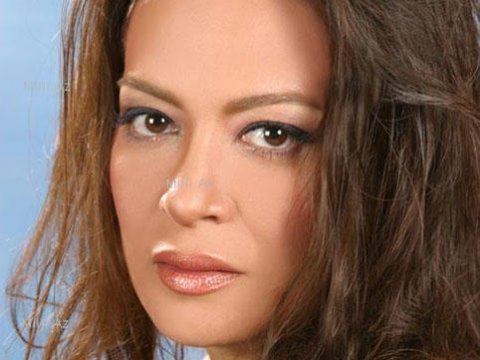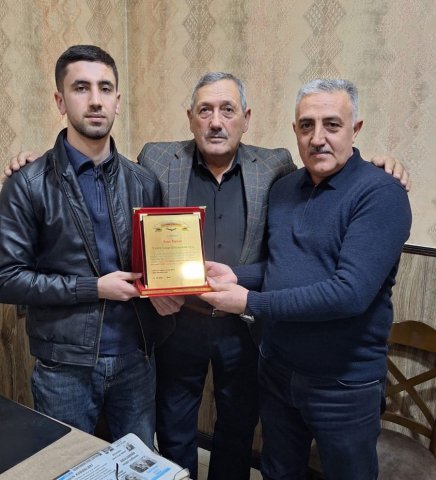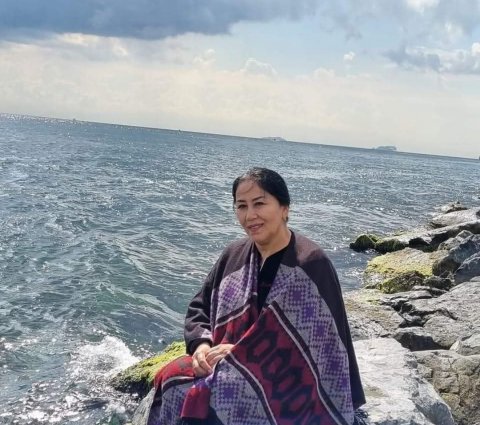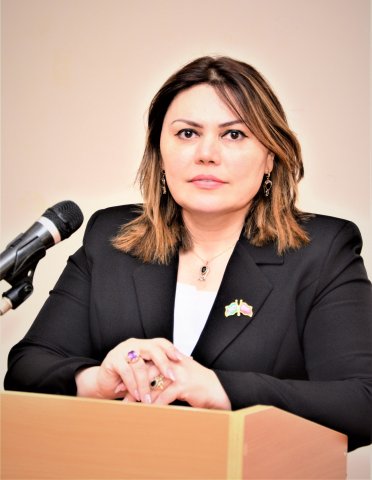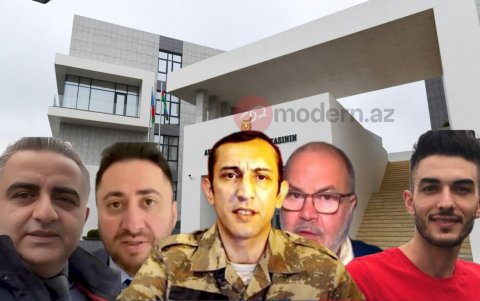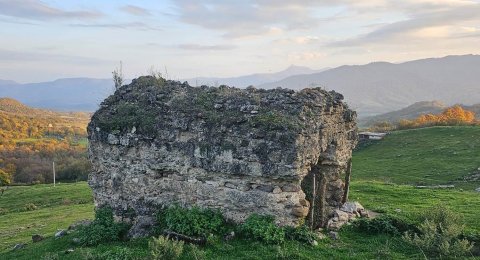
27-01-2022, 14:04
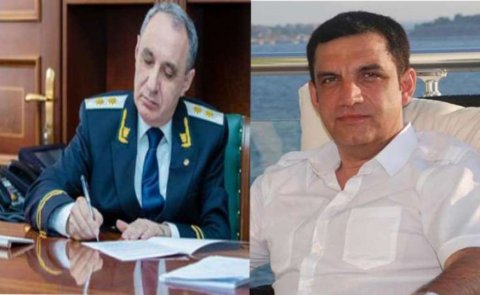
2020-ci ildə Yardımlıda Şəmsəddin Kərimov və oğlu Elməddin Kərimovun güllələnərək qətlə yetirilməsi ilə bağlı cinayət işinin istintaqına rəhbərlik edən prokuror Vahid Məmmədli vəzifədən çıxarılıb.
Qətldən bir neçə gün sonra onların hüquqi varisi Niyaməddin Kərimov onu qəbul edən Vahid Məmmədlinin istintaqa təzyiqləri barədə danışmışdı və bu dialoqun səs yazısı Baş Prokurorluğa təqdim edildikdən sonra V. Məmmədli barəsində xidməti yoxlama başlanmışdı.
Bütöv.az “Qafqazinfo”ya istinadən xəbər verir ki, prokurorun hərəkətləri barədə N.Kərimovun müraciəti əsasında Xidməti araşdırmalar idarəsində aparılan yoxlama materialı Vahid Məmmədlinin intizam məsuliyyətinə cəlb edilməsi üçün Etik Davranış Komissiyasına göndərilib.
Baş Prokurorluğun Mətbuat xidmətinin prokuroru Aynur Əfəndiyeva sorğumuza cavab olaraq bildirib ki, Baş prokuror Kamran Əliyevin 22 oktyabr 2021-ci il tarixli əmri ilə Baş Prokurorluğun Dövlət ittihamının müdafiəsi üzrə idarəsinin prokuroru Vahid Məmmədli tutduğu vəzifədən azad edilib.
Qeyd edək ki, daha öncə saytda Niyaməddin Kərimovun müraciəti üzrə yayımladığımız həmin səs yazısında Vahid Məmmədli qətli törədən Nürəddin Kərimov və oğlu Kənan Nuroğlunun arxasında Baş Prokurorluğun Təşkilat-Analitik İdarəsinin prokuroru Ədalət Həşimov və Zərdab rayonunun keçmiş prokuroru Hüseynxan Əliyevin durduğunu iddia edirdi.
27-01-2022, 13:03
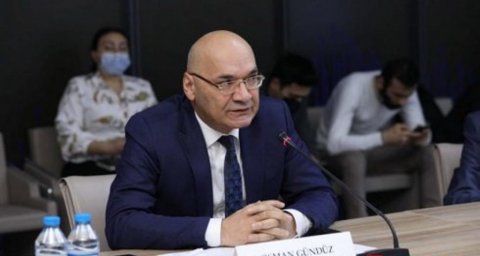
"Azərbaycana dron gətirilməsi ilə bağlı hələ də qeyri-müəyyən vəziyyət var. Bunun üçün bir neçə qurumdan icazə alınmalıdır. Bu məsələni həll etmək lazımdır".
"Report" xəbər verir ki, bunu Azərbaycan İnternet Forumunun prezidenti Osman Gündüz Bakıda keçirilən "Azərbaycanda rəqəmsal inkişaf və nəqliyyat sahəsi üzrə prioritetlər" mövzusunda seminarda deyib.
"icazə məsələsini həll etmək üçün proqram müəyyən edilməlidir. Mən bu proqramı hazırlamaq üçün dəstək verə bilərəm", - deyə o, qeyd edib.
Bundan başqa, O.Gündüz bildirib ki, kanalizasiya quyularının açılması və digər internet provayderlərinə onlardan istifadəyə imkan yaradılması yaxşı haldır.
"Son illər ölkədə 700-dən çox məktəb yüksəksürətli internetlə təmin olunub. Maraqlısı odur ki, bu məktəblərin təxminən 400-ü son 1 ildə, qalan 300-ü isə əvvəlki 10 ildə internetə çıxış əldə edib. Bu, internet təminatı sahəsində şəffaflığın göstəricisidir. Özəl provayderlərə daha yaxşı şərait yaradılmalıdır ki, onlar da xidmətini genişləndirsin", - deyə o, əlavə edib.
Bütöv.az
27-01-2022, 11:22
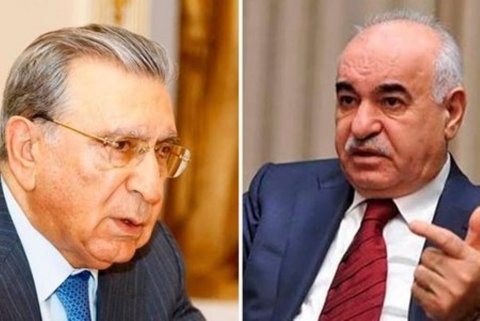
Azərbaycan Milli Elmlər Akademiyasının (AMEA) prezidenti Ramiz Mehdiyevlə Milli Məclisin keçmiş deputatı, AMEA-nın İşlər İdarəsinin sabiq müdiri Elton Məmmədovun arasında qalmaqal davam edir. Məsələnin məğzi budur ki, Ramiz Mehdiyev Elton Məmmədovu 2020-ci il yanvarın 16-da AMEA İşlər İdarəsinin müdiri, 2021-ci ilin yanvarında isə AMEA-nın Radiasiya Problemləri İnstitutuna baş direktor təyin edilib.
Bütöv.az xəbər verir ki, bu barədə “Yeni Müsavat” məlumat yayıb.
Elton Məmmədov AMEA-da işlədiyi il yarım ərzində Ramiz Mehdiyevin çap məhsullarına xərcləndiyini iddia etdiyi 10 milyon 400 min manatın izinə düşüb. Bundan sonra tərəflər arasında qalmaqal yaranıb, Elton Məmmədov işdən getməsi haqda ərizə yazıb. 1 gün sonra isə Ramiz Mehdiyev AMEA Rəyasət Heyətinin iclasını çağırıb. 13 aprel 2021-ci il tarixində keçirilən iclasda Ramiz Mehdiyev Elton Məmmədovun ünvanına təriflər yağdırır və onun işdən çıxarıldığını elan edir. Əshabələrinə də tapşırır ki, bu məsələni rəsmiləşdirsinlər.
Həmin iclasda çıxış edən Elton Məmmədov isə Ramiz Mehdiyevin ünvanına sərt fikirlər səsləndirib. Məsələ ondadır ki, Elton Məmmədov AMEA İşlər İdarəsinin müdiri olaraq çap məhsullarına ayrılan vəsaitlərin təyinatı üzrə xərclənmədiyini üzə çıxarıb. Elton Məmmədov bu faktları araşdırmaqla Ramiz Mehdiyevi qəzəbləndirib. Bu səbəbdən araları dəyib və Elton Məmmədovun AMEA-dan uzaqlaşdırılması ilə nəticələnib. Ramiz Mehdiyev Elton Məmmədovu işdən çıxardığını bəyan etsə də, sonuncu özünün istefa verdiyini bəyan edib.
Hesablama Palatasının təkcə 2018-2019-cu illər üzrə “AMEA-nın İşlər İdarəsinə ayrılan büdcə vəsaitlərinin icrası üzrə aparılan maliyyə və uyğunluq auditinə dair kənar dövlət maliyyə nəzarəti (KDMN) tədbirinin nəticələri haqqında” 25 fevral 2020-ci il tarixli Q-24 saylı sərt qərarında akademiyada çap işləri adı altında milyonlarla manat məbləğində dövlət vəsaitinin mənimsənildiyi əks olunub. Məlum olub ki, AMEA-nın müxtəlif çap işlərinin görülməsi üçün Ramiz Mehdiyevin oğlu Teymur Mehdiyevə məxsus olan “Şərq-Qərb” ASC-yə milyonlarla vəsait ötürülüb. Mətbəə pulu alandan sonra uzun müddət keçməsinə baxmayaraq, öz öhdəliklərini yerinə yetirməyib və ümumilikdə 10 milyon 400 min manatın izləri itib. İş üzrə Respublika Baş Prokurorluğu yanında Korrupsiyaya Qarşı Mübarizə Baş İdarəsində müvafiq cinayət işi başlanıb. Qeyd olunur ki, Ramiz Mehdiyev hələ Prezident Administrasiyasının rəhbəri olduğu dönəmdə irihəcmli çap işləri üzrə sifarişlərin məhz “Şərq-Qərb” ASC-yə verilməsi üçün vəzifə səlahiyyətlərindən sui-istifadə edib.
Elton Məmmədov deyib ki, AMEA-da Əmək Məcəlləsi və əmək müqaviləsi işləmir: “Bu gün AMEA-da 90 faiz əməkdaş, sadəcə olaraq, əmək müqaviləsinə deyil, iş vaxtına uyğun gedib-gəlməklə məşğuldur. Heç biri görəcəyi işlə məşğul olmur. AMEA-nın çox ölkələrlə əməkdaşlıq etdiyi müqavilələri var. Dövlət o müqavilələrdən irəli gələn birgə elmi tədqiqatın ortaya qoyulması, çoxsaylı alimlərin tamamlanmamış elmi məsələləri üçün Avropaya kifayət qədər vəsait verir. O vəsait isə təyinatı üzrə yox, şəxsi adamların maraqlarına sərf olunur. Mən bunları AMEA-da işlər idarəsinin rəhbəri vəzifəsində işlədiyim dövrdə aydınlaşdırmışam və hamısı Hesablama Palatasının öz aktında əksini tapıb. Bu özbaşınalıqların qarşısını almaq istəyən Elton Məmmədov kimi Azərbaycan ziyalısını, elmlər doktoru və professorunu uzaqlaşdırıb, kənara qoymaq nə deməkdir? Özbaşınalıqlar, yeyintilər, yersiz köçürmələr, Yüksək Texnologiyalar Parkının içərisində ofşor zona kimi dövlət vəsaitinin verilərək oradan silinməsi kimi məsələləri ortaya çıxarıb vicdanlı əməkdaş kimi rəhbərə məruzə etdim ki, bu işlər olub, amma olmamalıdır. Adını akademik qoyan Ramiz Mehdiyevin bu gün Rəyasət Heyətinin üzvlərinə, idarə və təşkilat rəhbərlərinə, elmi konsepsiyaya söykənən konkret mövqe ortaya qoya bilməməsi səriştəsiz idarəetmə sistemi deməkdir. Səriştəsizlikdən ortaya çıxan məsələlər isə dedi-qodulara, institut rəhbərlərinin birbaşa narazılığına gətirib çıxaracaq ki, bu da Azərbaycan ictimaiyyətinin bu gün üzləşdiyi faktlardır. Özüm məruz qaldığım üçün bunlar hamısı həqiqəti özündə əks etdirir”.
Elton Məmmədov Ramiz Mehdiyevi ermənini vəzifəyə qoymaqda ittiham edib: “Ramiz Mehdiyevin ətrafında olan akademiklərdən tutmuş idarə və şöbə rəislərinə kimi hamısı ona diktə etməklə məşğuldur. Kamal Əliyevin rəhbərlik etdiyi hüquq şöbəsinin fəaliyyəti ancaq çəkişmələrdən, dedi-qodulardan və akademiyanın qrupundakı yazışmalardan ibarətdir. Ramiz Mehdiyev erməni baldızının oğlunu AMEA-da vəzifəyə qoyub. Gündə işi-peşəsi qəzetdən qayçı ilə dedi-qoduları kəsməkdir. Üstəlik, Rəyasət Heyətində oradan-buradan qovulmuş yaxın adamlarını və qohum-əqrəbalarını oturdub. Bu gün həmin qohum-əqrəba Ramiz Mehdiyevə ”pas" ötürür. Çünki o, özü-özünü idarə edə bilmir, öz fikrinin daşıyıcısı və icraçısı deyil. O zamanlar AMEA-da Rasim Ağasiyev var idi. Hansı ki, zamanında Ramiz Mehdiyevin pasport və qeydiyyat şöbəsində işləyən qaynı Levan Qurskaya Yuriyeviçlə birləşib birbaşa ermənilərin Azərbaycan və rus adı ilə Azərbaycandan köçməsinə xidmət ediblər. AMEA-da elə insanlar var ki, səsini çıxara bilmir. İxtisası üzrə uzun müddət mərkəzi kitabxanada fəaliyyət göstərən gənc xanımı da həqiqəti dediyi üçün təhvil və təslim aktına imza atmadığı üçün sıxışdırırlar. Hansı ki, özündə dövlətin böyük tarixini və sirrini əks etdirən 1 milyondan çox kitab, eləcə də bütün sənədlər dövlət fondundan yoxa çıxıb. Ölkənin ideologiyasına kim rəhbərlik edir? Fatma Abdullazadənin nəzarəti və İsa Həbibbəylinin kurasiyası ilə Ramiz Mehdiyev! Ramiz Mehdiyev düşüncə tərzi ilə bu gün oranı idarə edə bilmir. Tək patent almaq hələ elmin inkişafı demək deyil. AMEA elm ocağı ilə yanaşı, həm də böyük təsərrüfatdır. Mən Yüksək Texnologiyalar Parkının ərazisində 800 kvadratmetrlik elmi tədqiqatların sonu olaraq tətbiq sahəsi yaratmışdım. O vaxtı da Ramiz Mehdiyevin təzyiqi ilə işdən çıxanda ölkə rəhbərinə ərizəmdə yazmışdım ki, AMEA-da olan ziddiyyətlər, qeyri-sağlam mühit, ölkə rəhbərinin siyasətinə zidd addımlar mənə burada milli ideologiyaya xidmət etməyə maneçilik törədir. Nə oldu, professor Kərim Şükürov ora müraciət edən kimi Rəyasət Heyəti dərhal müşavirə keçirdi və toplandı. Ərizəsinin tərkib hissəsi araşdırıldı. Amma Elton Məmmədov ərizə ilə müraciət edəndə və tərkibində də məhz səbəbləri göstərdiyi halda heç nə araşdırılmadı. Akademiyada ilk addımı mən atmışam. Rəyasət Heyətində kəskin ziyalı və vətəndaş mövqeyimi ortaya qoydum. Akademiyanın tamamilə başqa bir şeylə məşğul olduğunu, çəkişmələr kənarda qalmasını və institutlarda sağlamlaşma getməsini tələb etdim. Elm milliləşə bilməz. Bu gün AMEA-nın dövlət başçısının müəyyənləşdirdiyi prioritetlərdə və yaxud hansısa sahələrdə əməli, elmi tərkibi yoxdursa, akademiyanın özünü hansı fəaliyyət növü kimi müəyyənləşdirməsi məlumdur".
Elton Məmmədov AMEA ilə məhkəmə çəkişməsində qarşı tərəfi Kamal Əliyevin təmsil etdiyini deyib: “Bu adam bu gün AMEA-nın Hüquq və kadrlar şöbəsinin müdiri, eləcə də keçmiş Tərtər hadisələrində Azərbaycan xalqının zabitlərinin və əsgərlərinin başına oyunlar gətirən, ədalətsiz qərarlar qəbul edən Bakı Hərbi Məhkəməsinin hakimidir. Ötən il aprelin 13-də Rəyasət Heyətinin iclasında çıxış edib, ərizəmi təqdim etmişəm. Rəyasət Heyətinin iclasında heç bir akademik və ya üzv işdən getməyimə, yaxud ərizəmdə qeyd olunan fikrə münasibət bildirmədən haqqımda qərar qəbul edib. Aprelin 13-də ərizə yaza-yaza, ayın 12-də Ramiz Mehdiyev məni işdən azad edir. Axı canlı Rəyasət Heyətinin iclasıdır. İclasdan məhkəməyə vəsatət qaldırdım və həmin səs yazısını təqdim etdim. Kamal Əliyev Ramiz Mehdiyevlə məsləhətləşəndən sonra deyir ki, gizli səs yazısıdır. Gizli səsi agentura yazır, heç bir gizli səs yazmamışam. Kamal Əliyevə mənə təzyiq olunduğunu və məhkəməni yalnış istiqamətə yönəltmə deyə bildirdim. Sonuncu məhkəmədə mənə deyir ki, bu texniki səhvdir. Halbuki bir texniki səhv ucbatından insan məhkumluq həyatı yaşaya bilməz. Beləliklə, haqlarıma istinad olunaraq işə bərpa olundum. Dövlətdən məvacib və məzuniyyət haqqı alaraq, aprel ayında 56 gün məzuniyyətdə olmuşam. İyun ayının 24-də gəlib öz ərizəmlə işdən kənarlaşmalı idim. May ayında əmək müqaviləmə xitam verilib. Yenə Kamal Əliyevə sual verirəm ki, əgər may ayında işdən çıxmışamsa, dövlət iyunun 24-nə kimi mənə necə maaş verə bilər? Cavab yoxdur... Səbayel Rayon Məhkəməsi yenə də dekabr ayında ədalətli qərar verdi”.
Hazırda Elton Məmmədovla AMEA arasında məhkəmə çəkişməsi Bakı Apelyasiya Məhkəməsinə daşınıb. Fevralın 15-də apelyasiya instansiyasında tərəflərin şikayətləri dinləniləcək.
Bəzi mənbələr isə iddia edir ki, R.Mehdiyevlə E.Məmmədovun davasının səbəbləri daha dərindir. İddiaya görə, R.Mehdiyev PA rəhbəri olduğu dönəmdə E.Məmmədova onu icra başçısı təyin etdirəcəyi vədini verib və bunun “şirinliyini” öncədən alıb. Ancaq R.Mehdiyev bunu edə bilməyib və vəzifədən azad olunduqdan sonra “şirinliyi” qaytarmayıb, əvəzində Məmmədovu AMEA-da vəzifəyə gətirməklə neytrallaşdırmağa çalışıb. Ancaq burada daha çox onu aldatmaqla, yola verməklə məşğul olub. Nəticədə isə mövcud durum yaşanır...
26-01-2022, 13:47
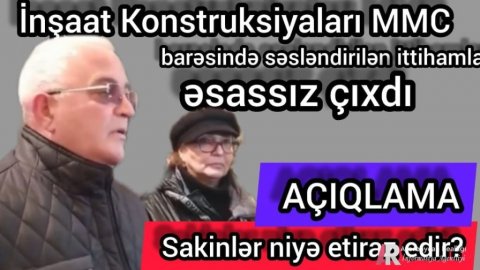
Bir neçə gün bundan öncə bir qrup Yasamal rayon sakini İnşaat Konstruksiyaları MMC tərəfindən illərdir evsiz-eşiksiz qalmaları və sökülən evlərinin qarşılığında tikinti şirkəti tərəfindən bu günə kimi mənzillə təmin olunmamaları ilə bağlı ölkə mətbuatına müraciət etmişdi. Həmçinin tikinti şirkəti tərəfindən hüquqlarının pozulması və evlərinin vaxtında verilməməsi ilə bağlı etiraz aksiyası keçirərək, pozulmuş hüquqlarının bərpası ilə əlaqədar olaraq ölkə rəhbərliyinə müraciət etmişdilər. Vətəndaşlar müraciətlərində qeyd edirdilər ki, tikinti şirkəti bina sakinlərə qarşı laqeyd münasibət bəsləyərək, mənzillərin təmirini gecikdirir və illərdir süründürməçiliyə məruz qoyur.
Bundan başqa sakinlər qeyd edirdi ki, bina hələ də bu günə kimi elektrik enerjisi həmçinin su anbarı ilə təmin olunmayıb. Etiraz aksiyası zamanı sakinlər bildirirdilər ki, binada heç bir təmir işləri həmçinin mənzillərdə bölgülər və blokların pilləkənlərində mərmərlər döşənməyib. Məsələ ilə əlaqədar olaraq, vətəndaşların şikayətini yerində araşdırmaq məqsədi ilə tikinti gedən ərazidə etirazçıların fikirlərini öyrənməyə çalışdıq. Bina sakinləri tərəfindən səsləndirilən ittihamlara cavab olaraq, şirkətin baş mühəndisi Elçin Əsədov açıqlama verərək, tikintinin 2022-ci ilin dekabr ayında bitərək dövlətə təhvil veriləcəyini qeyd etdi.
Şirkət rəsmisi açıqlamasında tikintinin başa çatdırılmasında gecikmənin əsas səbəbinin pandemiya dövrü və maliyyə sıxıntısı ilə əlaqələndirdi. Digər səsləndirilən ittihamlara cavab olaraq qeyd etdi ki, bina elektrik enerjisi ilə tam təmin olunub, enerji bloku quraşdırılıb və su anbarı tikilib. Bundan başqa mənzillərdə bölgü işləri aparılıb və binanın blokları ağardılaraq, mərmərlərlə döşənilib.
Ərazidən köçürülən sakinlərin kirayə haqları vaxtı-vaxtında şirkət tərəfindən ödənilib. Sakinlər tərəfindən səsləndirilən ittihamların əsassız olduğunu bildirən Elçin Əsədov, şirkətin işgüzar nüfuzuna xələl gətirməyə çalışan bir qrup şəxslərin dediklərinin həqiqətə uyğun olmadığını xüsusilə vurğuladı.
(AZƏRBAYCANREALLIĞI.COM)
Bütöv.az
25-01-2022, 13:04
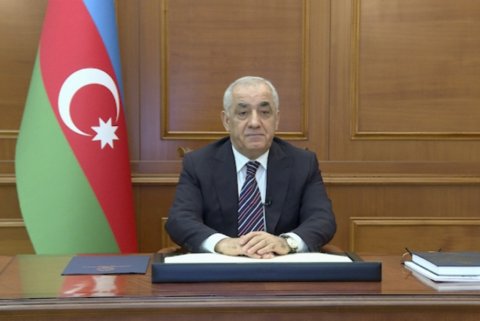
Yanvarın 25-də Azərbaycanın Baş naziri Əli Əsədov ilə Belarusun Baş naziri Roman Qolovçenko arasında telefon danışığı olub.
Bu barədə Axar.az-a Nazirlər Kabinetindən məlumat verilib.
Danışıq zamanı Azərbaycan-Belarus dostluq münasibətlərinin müxtəlif sahələrdə inkişafı yüksək qiymətləndirilib, qarşılıqlı faydalı əməkdaşlığın genişləndirilməsi perspektivləri müzakirə olunub.
Bütöv.az
24-01-2022, 14:37
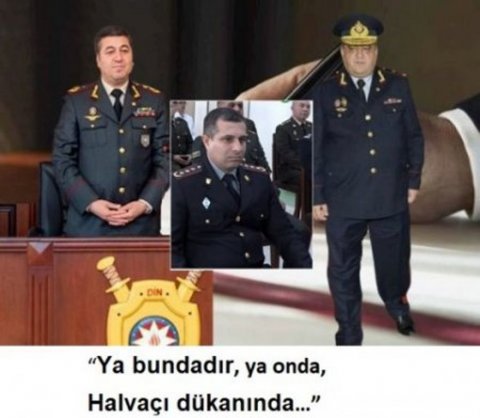
Əvvəlki yazılarımızda qeyd etmişdik ki, Naxçıvan MR DİN-in gedər-gəlməz məzuniyyətə göndərilən legitim naziri Fazil Ələkbərovdan sonra bu posta ən uyğun namizəd axtarışına başlanılıb və hazırda əsasən 4 namizəd üzərində durulur:
1. De-yure nazir Fazil Ələkbərov;
2. De-fakto nazir Rəşad İsmayılov;
3. Naxçıvan Mühafizə Polisi Şöbəsinin rəisi, polis polkovnik-leytenantı Gündüz Qədimov;
4. Naxçıvan Şəhər Polis İdarəsinin rəisi, polis polkovnik leytenantı Zahid Gözəlov.
Bütöv.az xəbər verir ki, ovqat.com-un Naxçıvan MR-dəki yüksək dairələrindəki adının çəkilməsini istəməyən qaynaqlardan əldə etdiyi məlumata görə, son zamanlar 5-ci namizəd də peyda olub. Üstəlik, bu namizəd heç də digərləri kimi “arabanın 5-ci təkəri” sayılacaq şəxslərdən deyil. Böyük ehtimalla, Muxtar Respublika rəhbərliyi çox düşünəndən sonra məhz həmin namizədin üzərində dayanacaq.
Yəqin, bu şəxsin kim olduğunu, türklər demişkən, maraq etdiniz? Səbrli olun, yazının sonlarında bu şəxs barədə geniş məlumat veriləcək. Hələlik isə onu deməklə kifayətlənmək istərdik ki, Naxçıvan MR Daxili İşlər naziri vəzifəsinə sayca 5-ci namizəd tapılsa da, bu gün rəhbərliyin masası üzərindəki dosyaların sayı dəyişilməyib. Yəni, Naxçıvan həqiqətləri riyaziyyat elminin bütün qızıl qaydalarını alt-üst edərək maraqlı bir formul ortaya çıxarıb:
4+1=4.
Axı bu, necə mümkün, deməyin. Məsələ burasındadır ki, əvvəla, burada söhbət Naxçıvandan gedir və əgər Cənab Sədr istəsə 4+1=3 də ola bilər. İkincisi, əvvəlki 4 namizəddən biri Naxçıvan Şəhər Polis İdarəsinin rəisi, polis polkovnik leytenantı Zahid Gözəlov ona gətirilən nazirlik təklifini geri çevirib. Cavabı isə nə olsa yaxşıdır? – “Sizi and verirəm Həzrət Abbasın qələm olmuş qollarına, xətanızı məndən uzaq edin”.
Qeyd edək ki, Zahid Gözəlov bir vaxtlar Azərbaycan DİN-nin informasiya şöbəsinin rəhbəri Sadıq Gözəlovun yaxın qohumudur. Yəni kifayət qədər informasiyalı adamdır. O, Naxçıvan MR Daxili İşlər naziri vəzifəsinə təyin olunmağı “xətalı” və təhlükəli addım sayırsa, deməli, bildiyi bir şeylər var.
Bununla belə, Zahid Gözəlovun nazirlik vəzifəsindən imtina qərarının Naxçıvanın polis əməkdaşları tərəfindən üzüntü ilə qarşılandığı da gələn bilgilər arasındadır. Söhbətləşdiyimiz bir sıra keçmiş polis əməkdaşları birmənalı olaraq Zahid müəllim barədə xoş sözlər söylədilər. Onun xaraktercə yaxşı insan, iş qabiliyyəti baxımından peşəkar polis olduğu vurğulanır. Bütün hallarda Z.Gözəlov kimi ləyaqətli kadrın bəlkə də öz işgüzar karyerasında qarşılaşacağı ən yüksək postdan imtina etməsi həqiqətən üzücüdür. Başqa yerlərdə nazir olmaqdan yana kadrlar az qala dəridən-qabıqdan çıxırlarsa, Naxçıvanda öz ayağı ilə hüzuruna gələn xoşbəxtlikdən özün imtina edirsən. Analoqsuz məmləkət ancaq belə olar, zənnimizcə. Bir də bəzi ağzıgöyçəklər iqtidar təbliğatçılarının tez-tez dilə gətirdiyi bu əsrarəngiz söz birləşməsinə rüşxənd edib dodaq büzürlər.
İndisə gəlin, keçək digər namizədlərə.
İnformasiya mənbəmizin bildirdiyinə görə, namizədlərdən digərinin – de-yure nazir Fazil Ələkbərovun da şansı gedərək tükənir. Xatırladaq ki, o, 01.11.2021-ci il tarixdə öz hesabına ödənişsiz məzuniyyət göndərilmişdi. Məzuniyyət vaxtı bitsə də hələ də de-yure nazir işə çıxmır. Cənab Vasif Talıbov artıq 3-cü aydır ki, Fazil Ələkbərovu vəzifəsindən azad edə bilmir, ya da azad etmək istəmir.
Amma son vaxtlar Naxçıvan MR DİN-dəki bəzi təyinatlar Fazil Ələkbərovun yenidən öz postuna qayıda biləcəyi ehtimalını tam istisna etməyə də imkan vermir. Belə ki, bir neçə gün bundan əvvəl Fazil Ələkbərovun adamı hesab olunan iki polis məmuru sözügedən strukturda məsul vəzifəyə gətirilib. Onlardan biri polis kapitanı Şahin Qasımov, digəri isə polis polkovnik-leytenantı Məmmədəli Məmmədovdur. Bu şəxslərin kimliyi barədə ətraflı məlumat almaq istəyənlər aşağıdakı linkə tıklaya bilərlər.
https://ovqat.com/olke/53645-naxcvan-dn-d-yeni-kadr-tyinatlar-olub.html
Yeni təyinatların səbəbi bir sıra amillərlə izah olunsa da, versiyalar arasında Fazil Ələkbərovun yenidən öz vəzifəsinə qaytarılması ehtimalı da yer alır. Baxmayaraq ki, bu versiyaya Naxçıvanın polis orqanlarında inananlar yox səviyyəsindədir. Amma o da var ki, Naxçıvanda bəzən inanılmaz möcuzələr peyda olur.
Digər namizəd, sözsüz ki, de-fakto nazir polis polkovniki Rəşad İsmayılovdur. 2021-ci ilin əvvələrində Naxçıvan DİN-ə nazir müavini təyin olunan Rəşad İsmayılovun əsas missiyası Fazil Ələkbərovu “vurmaq” idi. İddialara inansaq, bu təlimatı Naxçıvanın “boz kardinalı” ləqəbi ilə tanınan Azər Zeynalov və el arasında “Cənab Sədrin qara mələyi” kimi ün qazanan Cəlil Rüstəmov tərəfindən verilmişdi. Bildirilir ki, de-fakto nazir Rəşad İsmayılov Cəlil Rüstəmovla kirvədir və bu vəzifəyə təyin olunmasını peyğəmbər sünnətinə borcludur.
Bildirilir ki, öz üzərinə götürdüyü vəzifəni xüsusi məharətlə yerinə yetirən Rəşad İsmayılov “keçmiş quda”nın kitabı bağlandıqdan təxminən 1 ay sonra, daha dəqiqi, 15.12.2021-ci il tarixində Naxçıvan MR Ali Məclisi Sədrinin 168-06/S nömrəli sərəncamı ilə “nazir səlahiyyətlərini icra edən” şəxs vəzifəsinə təyin olundu. Belə bir vəzifənin mövcud olmadığını nəzərə alan bir çox polis əməkdaşları yaxınlarda Rəşad müəllimin həqiqi nazir olacağını gözləyirdilər. Lakin zaman uzandıqca, peyğəmbər sünnətinin hər yerdə, xüsusilə də “ala qarğanın bala çıxara bilmədiyi” Naxçıvanda o qədər də işə yaramadığı faktı inandırıcılıq qazanmağa başlayır.
İnformasiya mənbəmiz bunu olduqca normal hesab edir və Cənab Sədrin uzaqgörənliyinə bağlayır: “Rəşad İsmayılov düzgün seçim deyildi. Çünki cənab İsmayılov səriştəsiz, idarəetmə qabiliyyəti olmayan və düzgün kadr seçə bilməyən şəxsdir. Rəşad İsmayılovun səriştəsizliyinin nəticəsidir ki, artıq Naxçıvan DİN-də bir çox şəxs onunla işləmək istəmir. Əlbəttə ki, haqlıdırlar da. Çünki, cənab İsmayılov, məntiqsiz göstərişlər verərək, camaatı boğaza yığıb. İsmayılovu bu vəzifəyə təqdim edərkən, bəzi şəxslər cənab Vasif Talıbovu həqiqətən də aldatdılar. Etiraf edək ki, Vasif Talıbov ağıllı və uzaqgörən siyasətçidir, gec də olsa Rəşad İsmayılovun sərişətisizliyini gördü” (Görünür, informasiya qaynağımız “uzaqgörənlik”lə “gec görməkliyi” iki ayrı kateqoriyaya şamil edir – Ovqat.com).
Dördüncü namizəd Gündüz Qədimovun təklifinin Cahan Holdinqin sədri və Naxçıvan MR Ali Məclisinin deputatı Vüqar Abbasov tərəfindən verildiyini bildirən mənbəmizin dediklərinə görə, haqqında danışdığımız bu şəxs təqaüddə olan polis mayoru idi: “O, təqaüdə çıxdıqdan dərhal sonra Cahan Holdinqinin təhlükəsizlik şöbəsinin rəisi təyin olundu. Naxçıvana Daxili İşlər naziri axtarışına başlandıqdan sonra isə təqüddən geri çağırılan Gündüz müəllim Naxçıvan DİN-in Mühafizə Polisi Şöbəsinə rəis göndərildi. Gündüz müəllim hal-hazırda özünü Naxçıvan DİN-in naziri kimi aparır. Lakin təəssüflər olusun ki, Gündüz Qədimovda düzgün kadr deyil. Bunun səbəblərini burda yazmaq düzgün deyil. Cənab Vasif Talıbov Gündüz Qədimovun keçmişini ətraflı araşdırsa nə demək istədiyimizi anlayacaq. Həqiqətən istəmərik ki, cənab Talıbovun ətrafında olan işbazlar onu növbəti dəfə aldatsınlar. Çünki, Daxili İşlər Nazirliyi dövlətin daxili onurğasıdır. Onurğanın üstünə isə hər yoldan keçəni baş qoymaq olmaz”.
Hə, indi gəldik əsas məsələyə. Mənbəmizin iddiasına görə, Naxçıvan Daxili İşlər naziri postuna 5-ci namizədin adı Qasım Həsənov adlı şəxsdir.
Qasım Həsənovun hətta Naxçıvan MR DİN-də belə olmayan tərcümeyi halına gəlincə, o, 02.09.1966-cı ildə Culfa rayonunda anadan olub. Azərbaycan DİN-in Polis Akademiyasını bitirib. Naxçıvan DİN-də mühüm vəzifələrdə çalışıb. Uzun müddət Naxçıvan DİN-in İnsan Alverinə Qarşı Mübarizə İdarəsinin rəisi vəzifəsində xidmət edib. Hazırda isə Naxçıvan DİN-in Cinayət Axtarışı İdarəsinin rəisidir. Qasım Həsənov faktiki olaraq Naxçıvan DİN-in əməliyyat aparatının rəhbəridir. Rütbəsi polis polkovnikidir.
2021-ci ildə 55 yaşı tamam olduğu və daxili işlər orqanlarında son yaş həddinə çatdığı üçün təqaüdə göndərilməsi üçün ərizə belə yazıbmış. Ancaq Naxçıvan MR Ali Məclisinin sədri, cənab Vasif Talıbov Qasım Həsənovun təqaüdə göndərilməsinə razılıq verməyib”.
Mənbəmiz Cənab Sədrin bu hərəkətini də onun “uzaqgörənliyi” ilə izah edir: “Cənab Vasif müəllim də bilir ki, Qasım Həsənovsuz Naxçıvan DİN olmaz. Real vəziyyəti təhlil etsək, hazırda Qasım Həsənov Naxçıvan DİN-in yükünü təkbaşına öz çiyinlərində daşıyır. Qasım Həsənov çox ləyaqətli, bacarıqlı, idarəetmə qabiliyyəti yüksək olan, heç kimə qarşı haqsızlıq və ədalətsizliyə yol verməyən, şərəfli, polis peşəsinin və tutduğu mövqeyin ağırlığını düşünərək hərəkət edən, həm vətəndaşlar, həm də bütün polis əməkdaşları tərəfindən sevilən, dövlətinə, vətəninə sədaqətli olan, bir şəxsiyyətdir. Həqiqətən Qasım Həsənov kimi bir şəxs Naxçıvan DİN-ə gəlməyib və bundan sonra da çətin gələr.
Əslində cənab Vasif Talıbov Qasım Həsənovu təqaüdə göndərməməklə çox düzgün addım atıb. Qasım Həsənov təqaüdə getsəydi, Naxçıvan DİN-in bu günkü vəziyyətini düşünmək belə çətin idi. Naxçıvan Daxili işlər naziri vəzifəsinə, bütün hər kəs tərəfindən sevilən və Muxtar Respublikanın polis orqanlarında ağsaqqal kimi hörməti saxlanılan Qasım Həsənovdan layiqli kadr gələ bilməz. Qasım Həsənovun xidməti keçmişinə diqqət yetirsək, onun nə qədər mühüm bir şəxs olduğunu görə bilərik. Bu gün bataqlığa batmış Naxçıvan DİN-i o durumdan yalnız Qasım Həsənov çıxara bilər. Cənab Vasif Talıbov, işbilməz və bacarıqsız kadrlara etimad göstərib vaxt itirməkdənsə, Qasım Həsənova etimad göstərməsi ən düzgün qərar ola bilər”.
Təbii ki, bütün bunlar Naxçıvandakı mənbələrimizin mülahizələridir. O da istisna deyil ki, Naxçıvan MR Daxili İşlər Nazirliyinin ən yüksək postuna təyinat Bakı tərəfindən verilsin və bu, heç kimin gözləmədiyi sürpriz şəxs olsun. Zənnimizcə, Naxçıvan DİN-dəki hərc-mərcliyə son qoymağın ən qısa yolu da məhz budur: Heç kimi tanımayan və heç kimin tanımadığı, dolayısıyla hər kəsə eyni gözlə baxan nazir. O nazir ki, yeri gələndə paytaxtın sözünü daha üstün tuta və sosial şəbəkələrdə ölkə rəhbərliyini tanımadığını açıq-aşkar bəyan etməkdən çəkinməyən istənilən zabiti cəzalandırmağı bacara.
24-01-2022, 14:06
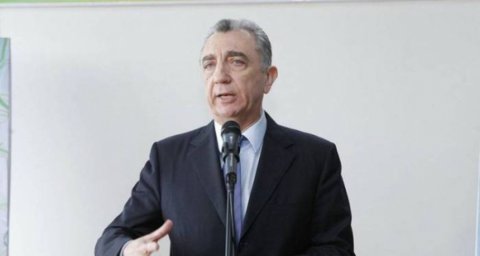
Xəbər verdiyimiz kimi, Bakı Şəhər Məktəbəqədər Təhsil Müəssisələri və Uşaq Evləri İdarəsinin strukturu ləğv edilib. İdarənin balansında olan bütün bağçalar Təhsil Nazirliyinə təhvil verilib.
Bütöv.az Qaynarinfo-ya istinadən xəbər verir ki, Bakı şəhər İcra Hakimiyyətinin başçısı Eldar Əzizovun müvafiq əmri ilə İctimai-siyasi, humanitar məsələlər və dini qurumlarla iş şöbəsi iki qurumla əvəzlənib. Ayrıca Dini qurumlarla iş şöbəsi yaradılıb.
İdarənin balansında olan 3 uşaq evi İctimai-siyasi, humanitar məsələlər şöbəsinə həvalə edilib. Şöbənin müdiri Elmin İmanovdur.
Bakı Şəhər Məktəbəqədər Təhsil Müəssisələri və Uşaq Evləri İdarəsinin rəisi Eldar Yunusov rəsmən vəzifəsiz qalıb.
24-01-2022, 13:53
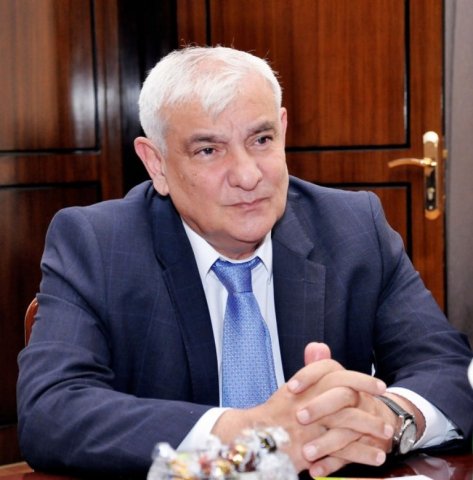
Xalq yazıçısı, akademik Kamal Abdullanın bir zamanlar rezonans doğuran layihəsi, geniş ədəbi proseslərə yol açan Yaradıcılıq fakültəsi yenidən qayıdır.
Kult.az xəbər verir ki, fakültə artıq Azərbaycan Dillər Universitetində yeni dönəm yaşayacaq.
Yaradıcılıq fakültəsi bu dəfə ADU və Azərbaycan Yaradıcılıq Fondunun birgə layihəsidir. Fakültəni bitirən məzunlara Azərbaycan Dillər Universitetinin və Azərbaycan Yaradıcılıq Fondunun ortaq diplomu veriləcək.
Layihə çərçivəsində 2022-2023 tədris ilində tələbələrə xarici dil (ingilis, rus), mifologiya tarixi, fəlsəfə, dünya ədəbiyyatı, müasir ədəbi proseslər, mətnşünaslıq və s. fənlər üzrə dərslər təşkil ediləcək. Yazı sənəti, dram-kino sənəti ilə bağlı praktiki məşğələlər, ustad dərsləri, görkəmli imza sahibləri ilə görüşlər, rəngarəng mədəniyyət tədbirləri həyata keçiriləcək.
Dərslər həftədə 3 gün olmaqla 2 akademik saat təşkil edir.
Yaradıcılıq fakültəsinə qəbul iki mərhələli olacaq. Birinci mərhələdə təqdim edilən yaradıcılıq nümunələrinin qiymətləndirilməsi, ikinci mərhələdə isə seçilən nümunələrin müəllifləri ilə müsahibə keçiriləcək.
Fakültəyə qəbulla bağlı tələb olunan ilkin sənədlər aşağıdakılardır:
Tərcümeyi-hal;
Yaradıcılıq nümunəsi (5 şeir, yaxud 10 min işarəlik nəsr nümunəsi);
Təhsil sənədinin (şəhadətnamə, attestat, diplom, tələbə bileti və s.) surəti;
3×4 ölçüdə 2 ədəd fotoşəkil.
Tələb olunan sənədlər elektron formada 2022-ci il fevralın 1-dək bu ünvana göndərilməlidir: mubarizz1967@mail.ru
Təhsil müddəti 2 il olmaqla illik təhsil haqqı 500 AZN təşkil edir.
Fakültənin yeni dekanı yazıçı Mübariz Örəndir.
Fakültənin təqdimatı 25 yanvar saat 18:00-da Yaradıcılıq Fondunda olacaq.
Qeyd edək ki, akademik Kamal Abdullanın ideyası ilə 2007-ci ildə Bakı Slavyan Universitetində yaradılan Yaradıcılıq fakültəsi 2016-cı ilə qədər fəaliyyət göstərib. Fakültənin məzunları sırasında müasir dövrün gənc istedadları, şair və yazıçılarının adı var. 2016-cı ildə BSU-nun sabiq rektoru Nurlana Əliyeva tərəfindən fakültənin fəaliyyəti dayandırılmışdı.
Bütöv.az
21-01-2022, 18:52

Fövqəladə Hallar nazirinin müavini, general-leytenant Nazim Xeyrulla oğlu Məmmədov vəzifəsindən kənarlaşdırılıb.
Bütöv.az qaynarinfo-ya istinadən xəbər verir ki, nazir müavinin bir müddətdir səhhətində ciddi problemlər yaranıb.
Nazim Məmmədovun səhhətində yaranan problemin əsas səbəbi barədə redaksiyamıza məlumat daxil olsa da, hazırda informasiyanı dəqiqləşdirməyə çalışdığımız üçün yayımlamağı məqbul hesab etmirik.
Qeyd edək ki, 70 yaşı olan Nazim Məmmədov 2007-2018-ci illər Dövlət Gömrük Komitəsinin sədr müavini olub, 2018-ci ildən Fövqəladə Hallar nazirinin müavini vəzifəsini tutur.
Onun oğlu Mustafa Məmmədov da uzun müddət Dövlət Gömrük Komitəsində, daha sonra FHN-də bir sıra vəzifələrdə çalışıb.
Məsələ ilə bağlı Fövqəladə Hallar Nazirliyinin (FHN) mətbuat xidmətinin rəhbəri Gülçin Mehdiyevanın mövqeyini öyrənməyə çalışdıq. Bir neçə gün ərzində etdiyimiz bütün cəhdlər nəticəsiz qaldı.
21-01-2022, 18:50
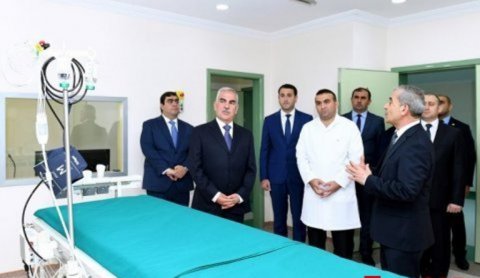
Naxçıvan MR-ın Respublika Xəstəxanası öz unikallığına görə, dünya səhiyyə tarixinə düşməyə haqq qazanıb. Amma burada söhbət müalicə işinin mükəmməlliyindən getmir. Naxçıvanın Respublika xəstəxanası dünyadakı həmcinsləri arasında səhiyyəyə gümrük qaydaları gətirən yeganə sağlamlıq ocağıdır.
Bütöv.az xəbər verir ki, ovqat.com-a Muxtar Respublikadan göndərilən şikayət məktublarından belə anlaşılır.
İddialara görə, Naxçıvan Respublika xəstəxanasında rentgen və laboratoriyaya ayaq basan hər sığortalı xəstədən 5 manat pul alınır. Hər gün həmin şöbələrə 150-160 nəfərin müraciət etdiyini nəzərə alsaq, bu, heç də kiçimsənəcək məbləğ deyil.
Naxçıvanın xəstə vətəndaşlarının problem bununla da bitmir. Redaksiyamızın ünvanına göndərilən şikayət məktublarından bəzi çıxarışları olduğu kimi diqqətinizə çatdırırıq. Şikayətlərin təqdimatından əvvəl bildiririk ki, bu gündən etibarən Ovqat.com saytında “Naxçıvan harayı” rubrikasının yayımına başlayırıq.
Xatırladaq ki, Prezident İlham Əliyev bir neçə gün əvvəl yerli tele-jurnalistlərə verdiyi müsahibədə vətəndaşları qarşılaşdıqları problemləri mütləq ictimailəşdirməyə dəvət etmişdi. O vurğulamışdı ki, Azərbaycanda baş verən özbaşınalıqları media orqanlarından oxuyur və problemləri ortadan qaldırır. Məmurlar üzərində ictimai nəzarəti təmin etmək və Respublika rəhbərliyini ölkənin real vəziyyəti ilə məlumatlandırmaq üçün vətəndaşları aktiv olmağa çağıran ölkə başçısı bildirmişdi: “Mən daim bunu deyirəm, vətəndaşlara müraciət edirəm, biganə qalmayın və nəzarət edin. İctimai nəzarət bir çox məmurları bu cinayət xarakterli işlərdən çəkindirəcək... Deyə bilərəm ki, mən bəzən xoşagəlməz hallar haqqında sizdən öyrənirəm, sizdən bu xəbəri tuturam və dərhal reaksiya verilir. Deyə bilərəm ki, bir çox hallarda mediada olan məlumatlar təsdiqlənir. Elə məlumatlar var ki, onlar qərəzli xarakter daşıyır. Amma məlumatların mütləq əksəriyyəti təsdiqlənir və dərhal ölçü götürülür. Ona görə dövlət məmurları bilməlidirlər, onların işinə təkcə Prezident Administrasiyası yox, həm ictimaiyyət, həm də media nümayəndələri nəzarət edir”.
Biz də Prezidentin bu çağırışını əldə rəhbər tutub Muxtar Respublika əhalisi ilə Azərbaycan rəhbərliyinin arasında körpü yaratmaq məqsədilə “Naxçıvan harayı” rubrikasını yaratmağa qərar verdik. Qarşılaşdığınız problemləri ya birbaşa bizim e-mail ünvanına, ya da təhlükəsizliyinizin təminatı üçün Bakıda və digər rayonlarda yaşayan yaxınlarınız vasitəsilə Baş redaktorumuzun WhatsApp nömrəsinə göndərə bilərsiniz. WhatsApp nömrəmiz: 055 746 40 44.
“Naxçıvan harayı”nın ilk buraxılışını təqdim edirik.
Naxçıvan Muxtar Respublikası Ali Məclisinin Sədri Vasif Talıbov 18 mart 2020-ci il tarixli Fərmanı ilə bu diyarda icbari tibbi sığorta tətbiq olunur. Bizə göndərilən şikayət məktublarında isə vətəndaşlar bu haqlarından istifadə edə bilmədiklərini vurğulayırlar. Onların bildirdiklərinə görə, xəstəxanalarda sığortalı xəstələri elə get-gələ salırlar ki, sonunda məcbur qalıb pullu xidmətdən istifadə edirlər. Maraqlıdır ki, sığorta adı gələndə işləməyən şöbələr pulu xidməti canla-başla yerinə yetirirlər. Özü də normal qiymətindən bir neçə dəfə baha.
Bildirildiyinə görə, tibbi sığorta Naxçıvanda sözün həqiqi mənasında mənimsəmə vasitəsinə çevrilib: “Hər kəsə tibbi sığorta adıyla 2000-3000 manat yazılır və heç kimə bu pul verilmir. Ümumiyyətlə, tibbi sığorta Muxtar Respublikanın kasıb əhalisinin başında çatlayıb. Halbuki, hər kəs tibbi sığortaya keçmək xəbərini eşidəndə sevinmişdi. Tibbi sığortanın gətirdiyi yeganə dəyişiklik isə qiymət artımında oldu. Əvvəl UZİ-yə 10 manat verilirdisə, indi onun qiyməti rəsmən 30 manata yüksəlib. Əhali əvvəl bu qiymət artımına əhəmiyyət vermirdi. Necə olsa, tibbi sığorta yolu ilə ödənəcəkdi deyə düşünürdü. Lakin, necə deyərlər, sən saydığını say, gör, “xan” nə sayır; indi tibbi sığorta adı çəkiləndə Muxtar Respublikanın xəstəxanalarında heç bir avandanlıq işləmir. İnsanlardan məcburi nəğd ödənişlər tələb olunur. Şikayətçilər dəfələrlə Ali Məclisə getsələr də, onların qarşısına adətən Vasif Talıbovun Birinci müavini Azər Yadulla oğlu Zeynalov çıxır. Azər müəllim isə insanlarla kobud rəftar edib qorxudaraq yola salır. Xəstələr məcburən nəğd ödənişlə müayinə olunurlar. Onlardan həm də tibbi sığorta ödənişi çıxılır. Yəni Naxçıvanın səhiyyə sistemi indiki məzənnə ilə ikiqat, köhnə məzənnə ilə 6 qat qazanır”.
Şikayətçi iddia edir ki, artıq Naxçıvanda hər kəs köhnə səhiyyə sisteminin – “sığortasız günlərin” nostalgiyasını yaşayırlar.
İddialara inansaq, ən acınacaqlı vəziyyət Naxçıvanın Respublika xəstəxasında yaşanır: “Xəstəxananın yeni təyin olunan baş həkimi Bağırov Zəbur David oğlu MR Səhiyyə nazirinin yaxın qohumudur. 2018-ci ildə bu vəzifəyə təyin olunub. Ötən il keçirilən Ali Məclisə seçkilərdə 38 saylı dairəsindən deputat mandatı ilə mükafatlandırılan Zəbur həkim üzərindən az keçməmiş Səhiyyə nazirinin 69 saylı əmr ilə yaradılan Tibbi Şuranın rəhbərliyinə gətirildi. Bir sözlə, Naxçıvanın bütün səhiyyə sisteminin taleyi cəmi 35 yaşı olan bu gənc adama həvalə edilib. O da özünü hakimi-mütləq kimi hiss edib müştəri gözüylə baxdığı xəstələrlə ürəyi istədiyini davranır”.
Naxçıvan səhiyyəsinin həm xəstələrdən, həm sığortadan pul qazanmasının Muxtar Respublikada böyük qalmaqal səbəb olduğu bildirilir: “Səbəb isə sığortadan külli miqdarda pulun ayrılmasıdır. Yəni xəstəxanalarda həkimlər tərəfindən icra olunmayan prosedurlar, bir əməliyyat əvəzinə xəstədə 2-3 cərrahi əməliyyat aparılmış kimi göstərilməsi, sığorta sistemini çöküşə sürükləyir”, - şikayət məktubunda belə deyilir.
İddia olunur ki, ayın axırı həkimlərin hesabına yüklü miqdarda vəsait köçürülür: “Bu hesabla Naxçıvanın ən yaxşı yaşayan təbəqəsi həkimlər olmalıdır. Görəsən belədirmi? Əlbəttə ki, yox!
İndi sizə Respublika xəstəxanasında ənənə halını almış bir halı deyim. Sığorta pulu köçürülən günün səhəri həkimlər (80%) qrup halında sırayla ikinci mərtəbəyə qalxırlar. Baş həkim tərəfindən əvvəlcədən yazılmış siyahıya əsasən, hesablarındakı pulun 30%-ni götürməklə yerdə qalan pulu geri qaytarırlar. Yəni həkimlər heç də qaz vurub, qazan doldurmur. Burada oturduğu yerdə cibi dolan biri varsa o da baş həkim Zəbur Bağırovdur.
Bu cür hər tərəfindən pul yağan bir xəstəxananın borclu olması çox düşündürücü bir haldır.
Yerdə qalan həkimlər (20%) isə normal işlədiyi halda heç bir sığorta əlavəsi almayanlardır. Bunlar baş həkim üçün qazanc mənbəyi sayılmadığından hər dəfə təhqirə, işdən qovulmaq təhdidinə məruz qalırlar.
Xəstəxanada bir də baş həkim tərəfindən "torpaqbasdı" haqqı alınır. Rentgen və laboratoriyaya ayaq basan hər sığortalı xəstədən 5 manat pul toplanır. Gün ərzində bunlardan 150-160 insanın istifadə etdiyini nəzərə alsaq bu məbləğin heç də az olmadığını görərik”.
Respublika xəstəxanasından gələn digər məktublardakı önəmli iddialar isə belədir:
Baş həkimin hərəkətlərində qəribə bir təzad var.Bir müddət əvvəl işçiləri toplayıb “bura qaş ustası gətirmişəm, qaş döydürməlisiniz”, deyən insan indi dırnaq sökdürür.
Artıq iki ilə yaxındır Respublika xəstəxanasında həkim endoskopist kimi çalışan doktorun əslində xəstəxanada heç bir yerdə adı olmadığı aşkarlandı. Həmin yer hal-hazırda vakant yer olaraq qalır. Və ağlımıza gələn ilk şübhə həmin şəxsin ("Paşa dr.") bəlkə də heç həkim belə olmamağıdır.
Amma qeyd etdiyimiz həkimin haqqını da danmayaq. Xəstəxanada çalışmasa da gün ərzində 15-20 sığortalı xəstəni ödənişli olaraq müayinə edib. Yəni kişi qazanc mənbəyidir vəssalam. Bunun qanuni və ya qanunsuz olması isə əhəmiyyət kəsb etmir
Son günlər isə baş həkim fəaliyyətini daha da genişləndirib. Öz həkimlik fəaliyyətinə işçilərin əllərini yoxlamağı da əlavə edib. Qadın işçilərin əlindəki əlcəkləri çıxarıb bir-bir dırnaq yoxlayır. Maraqlıdır əlcəklə işlənən bir yerdə bu yersiz hərəkət nəyə lazımdır?
Sorğu
Saytımızda hansı mövzulara daha çox yer verilməsini istəyirsiniz?
Son buraxılışımız
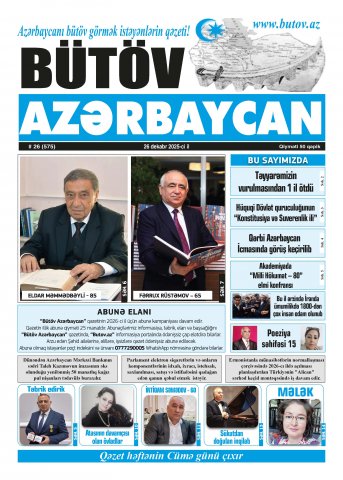
Facebook səhifəmiz
Hava
Valyuta
Reklam

Sayğac
Ən çox baxılanlar
Köşə
Xəbər lenti
Foto

Bütöv.az
Video
"Vətən Qəhrəmanları" Şəhid İlyas Nəsirov
All rights reserved ©2012 Butov.az
Created by: Daraaz.net Wep Developer By DaDaSHoV
MATERİLLARDAN İSTİFADƏ EDİLƏRKĦƏN PORTALIMIZA İSTİNAD ZƏRURİDİR!!!
Created by: Daraaz.net Wep Developer By DaDaSHoV
MATERİLLARDAN İSTİFADƏ EDİLƏRKĦƏN PORTALIMIZA İSTİNAD ZƏRURİDİR!!!





